Abstract
Research since the World War II has confirmed that, apart from the production of haemozoin from haemoglobin, most of the pathological processes in the evolution of malaria are nonspecific. A few of these nonspecific host reactions are discussed, including the production of inflammatory stasis in certain areas (including the brain) where the vascular endothelium is normally highly impermeable to heavy molecules. This production of stasis is regarded as the basic phenomenon in local obstruction to blood flow. So-called “plugging” of small vessels with “sticky” infected erythrocytes is discussed in relation to stasis and to deep intravascular schizogony. Nonspecific vasomotor effects including shock and renal and hepatic failure are also discussed. Intravascular coagulation is not regarded as a potentially important host response despite demonstrable consumption coagulopathy. The disease malaria is regarded as an example of a chain reaction of physiological—pathological responses in the host, which in the early stages are reversible.
Full text
PDF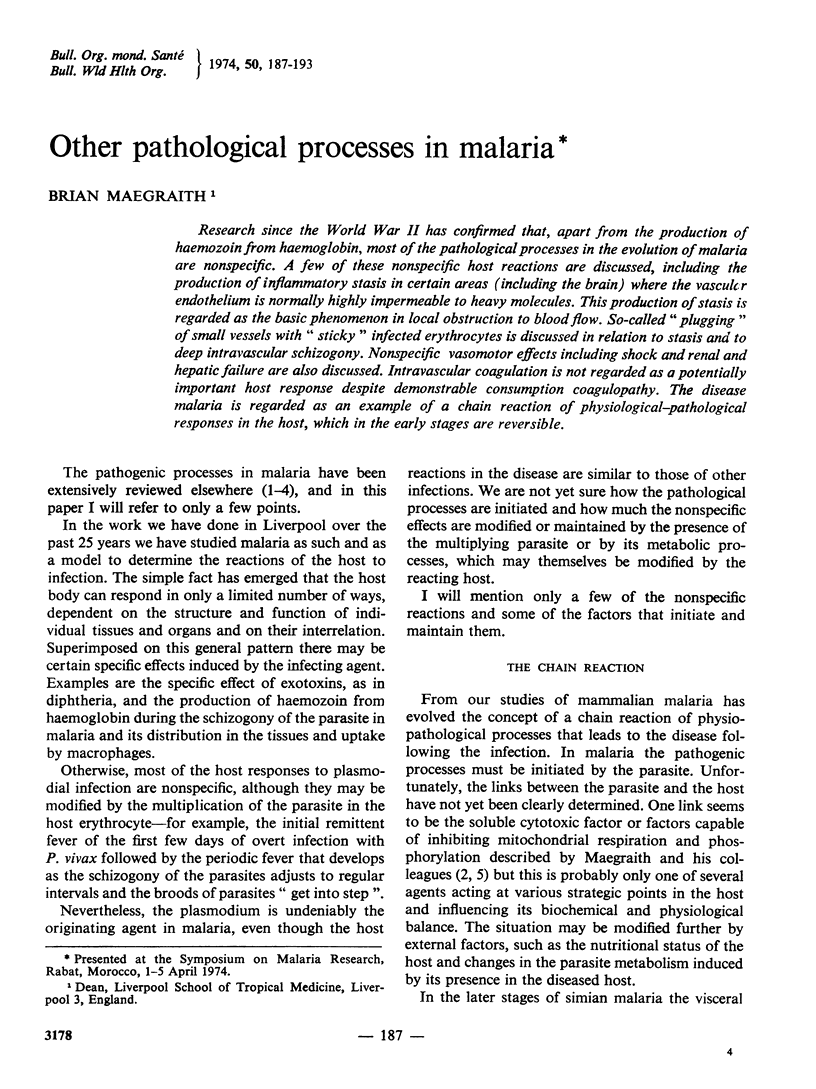
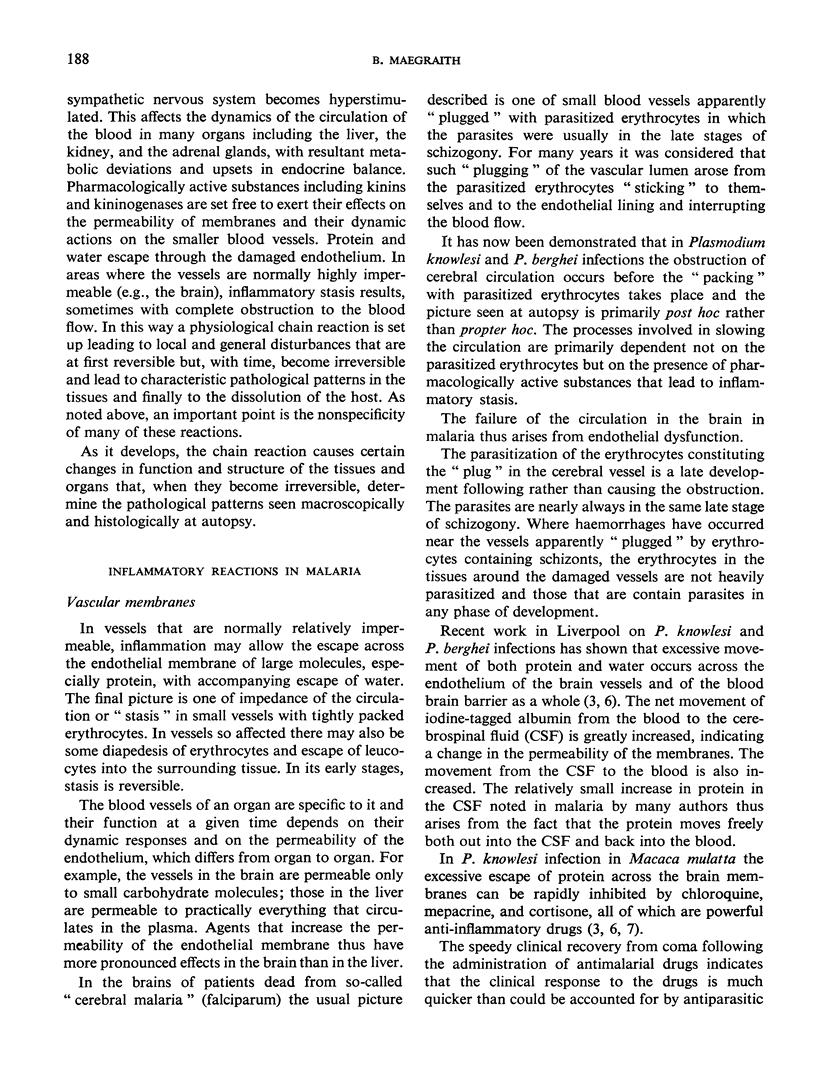


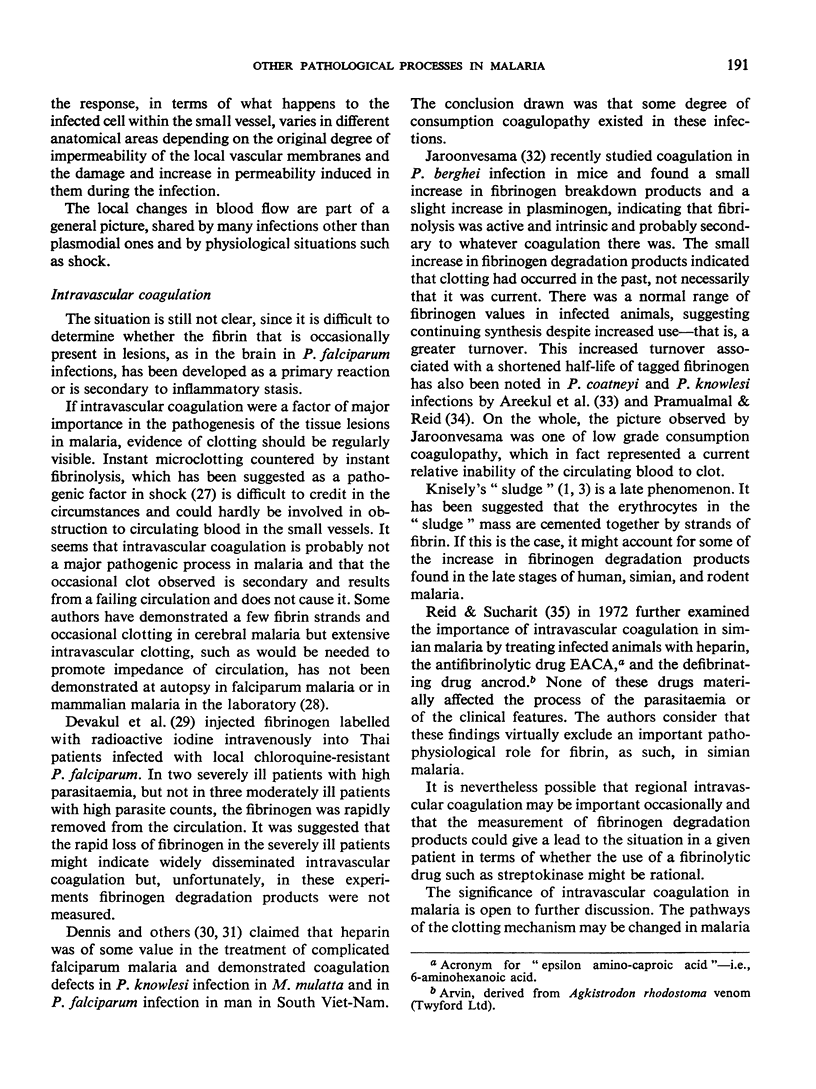
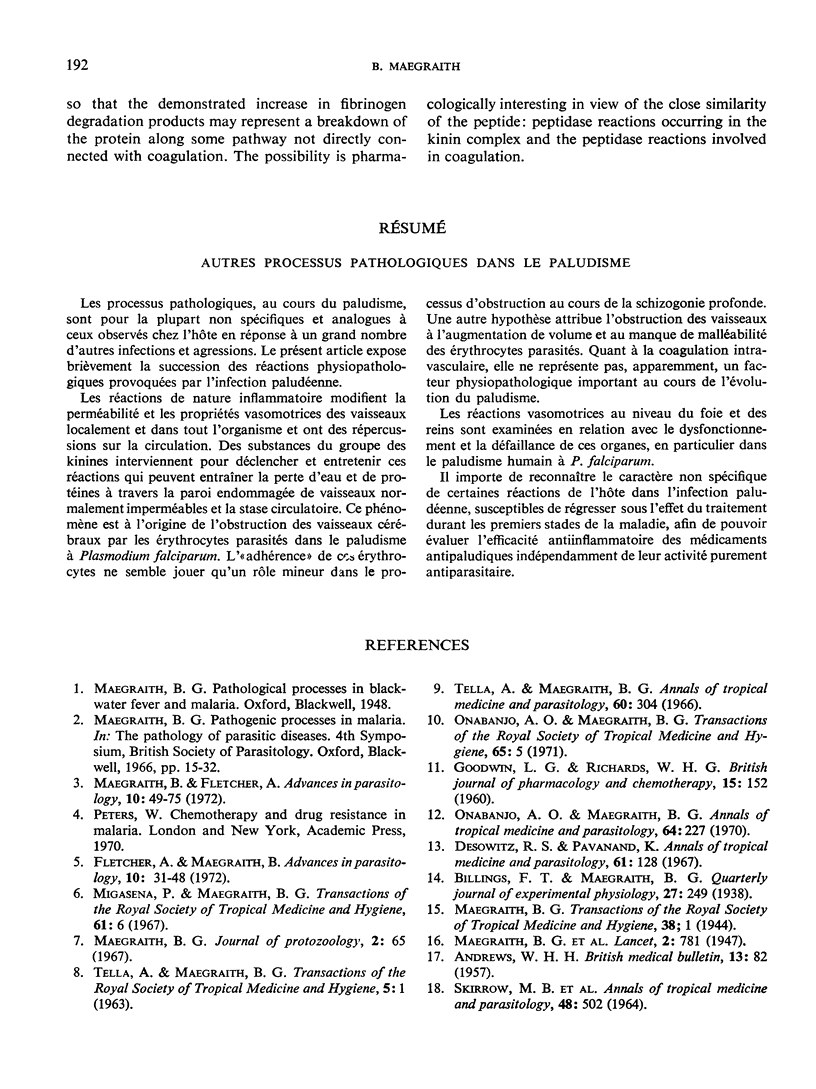
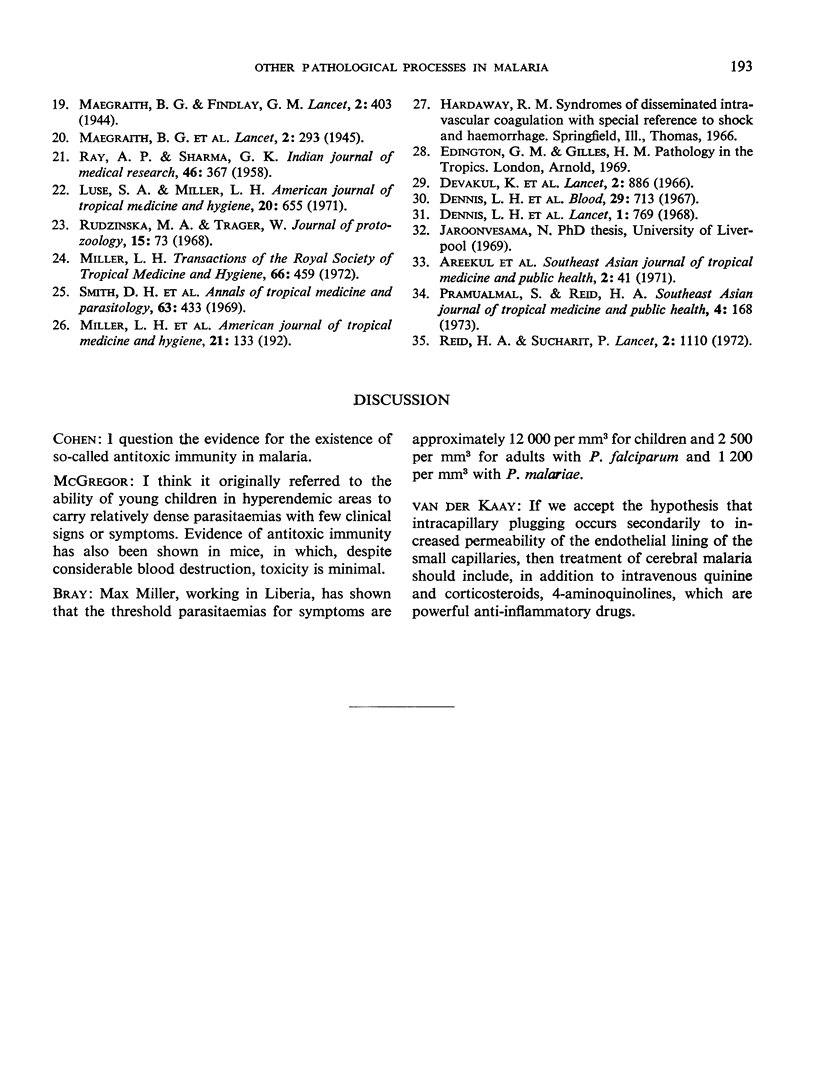
Selected References
These references are in PubMed. This may not be the complete list of references from this article.
- Dennis L. H., Conrad M. E. Anticoagulant and antimalarial action of heparin in simian malaria. Lancet. 1968 Apr 13;1(7546):769–771. doi: 10.1016/s0140-6736(68)92225-3. [DOI] [PubMed] [Google Scholar]
- Dennis L. H., Eichelberger J. W., Inman M. M., Conrad M. E. Depletion of coagulation factors in drug-resistant Plasmodium falciparum malaria. Blood. 1967 May;29(5):713–721. [PubMed] [Google Scholar]
- Desowitz R. S., Pavanand K. A vascular-permeability-increasing factor in the serum of monkeys infected with primate malarias. Ann Trop Med Parasitol. 1967 Jun;61(2):128–133. doi: 10.1080/00034983.1967.11686469. [DOI] [PubMed] [Google Scholar]
- Devakul K., Harinasuta T., Reid H. A. 125-I-labelled fibrinogen in cerebral malaria. Lancet. 1966 Oct 22;2(7469):886–888. doi: 10.1016/s0140-6736(66)91982-9. [DOI] [PubMed] [Google Scholar]
- Fletcher A., Maegraith B. The metabolism of the malaria parasite and its host. Adv Parasitol. 1972;10:31–48. doi: 10.1016/s0065-308x(08)60171-2. [DOI] [PubMed] [Google Scholar]
- GOODWIN L. G., RICHARDS W. H. Pharmacologically active peptides in the blood and urine of animals infected with Babesia rodhaini and other pathogenic organisms. Br J Pharmacol Chemother. 1960 Mar;15:152–159. doi: 10.1111/j.1476-5381.1960.tb01224.x. [DOI] [PMC free article] [PubMed] [Google Scholar]
- Luse S. A., Miller L. H. Plasmodium falciparum malaria. Ultrastructure of parasitized erythrocytes in cardiac vessels. Am J Trop Med Hyg. 1971 Sep;20(5):655–660. [PubMed] [Google Scholar]
- Maegraith B., Fletcher A. The pathogenesis of mammalian malaria. Adv Parasitol. 1972;10:49–75. doi: 10.1016/s0065-308x(08)60172-4. [DOI] [PubMed] [Google Scholar]
- Onabanjo A. O., Maegraith B. G. Inflammatory changes in small blood vessels induced by kallikrein (kininogenase) in the blood of Macaca mulatta infected with Plasmodium knowlesi. Ann Trop Med Parasitol. 1970 Jun;64(2):227–236. doi: 10.1080/00034983.1970.11686685. [DOI] [PubMed] [Google Scholar]
- RAY A. P., SHARMA G. K. Experimental studies on liver injury in malaria. II. Pathogenesis. Indian J Med Res. 1958 May;46(3):367–376. [PubMed] [Google Scholar]
- Reid H. A., Sucharit P. Ancrod, heparin, and -aminocaproic acid in simian Knowlesi malaria. Lancet. 1972 Nov 25;2(7787):1110–1112. doi: 10.1016/s0140-6736(72)92716-x. [DOI] [PubMed] [Google Scholar]
- Sucharit P., Reid H. A. Fibrinogen catabolism in Plasmodium knowlesi malaria. Southeast Asian J Trop Med Public Health. 1973 Jun;4(2):168–171. [PubMed] [Google Scholar]
- Tella A., Maegraith B. G. Studies on bradykinin and bradykininogen in malaria. Ann Trop Med Parasitol. 1966 Sep;60(3):304–317. doi: 10.1080/00034983.1966.11686421. [DOI] [PubMed] [Google Scholar]


